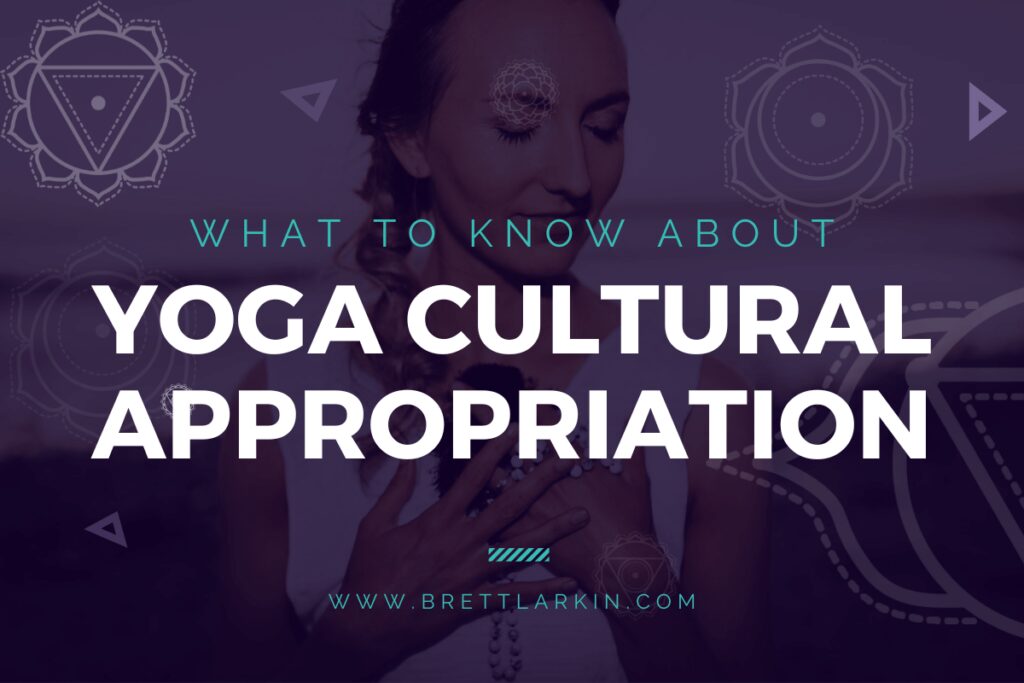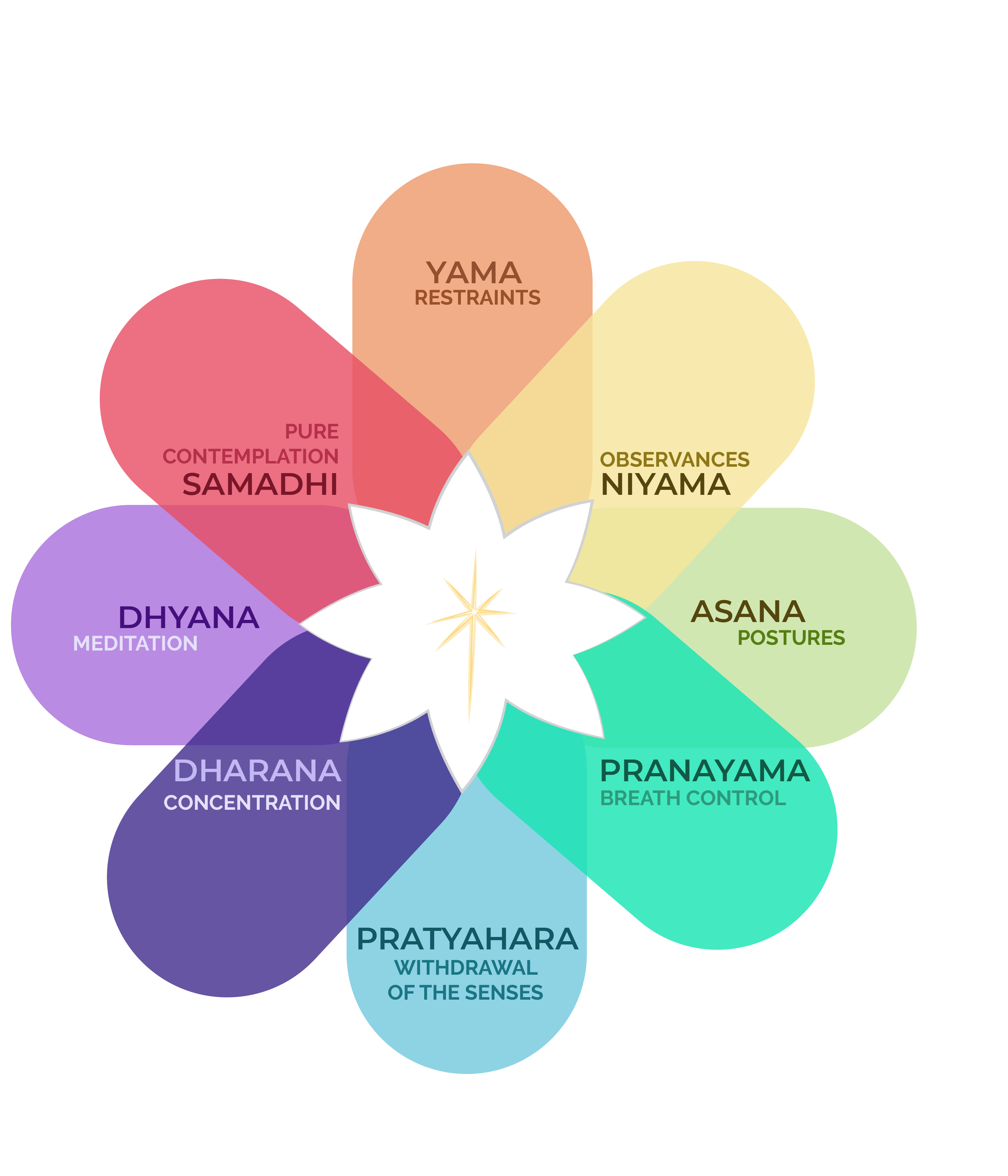
You’ve heard of cultural appropriation and may have wondered if you have appropriated Indian or South Asian culture in your yoga practice or yoga teaching. Yoga has a deep cultural history.
Let’s try and sail the murky waters of what yoga cultural appropriation is and how you can avoid it. Please know that I am a white woman and yoga teacher writing this article.
For that reason, I’ve included as many links and references as possible to Indian teachers who have deeper expertise on this topic. I’ve also gathered a list of books, websites and social accounts to follow for deeper study.
It’s my hope that this overview can serve as a jumping off point for well-meaning teachers to educate themselves and learn more.
Let’s get started…
What is Yoga Really?
When scrolling through the vast internet, much of what is called “yoga” today would not be considered yoga hundreds or thousands of years ago. Original yoga didn’t even include asana (poses). In fact the yoga sutras only mention “yoga postures” twice and less in the context of physical movements and more to mean “a comfortable seat.”
If you’re in the Uplifted community or have done my online yoga teacher training, you know yoga includes far more than the postures (asana). The aim of yoga is to quiet the mind. This is done through breath work (pranayama), meditation, and clean living. The end goal, samadhi, is enlightenment, which is a state of union, interconnectedness, clarity and peace.
Yoga is a lifestyle. It is a choice that can be made in each moment to unite our individuality with the unified field of awareness, source or God.
In the film, You Are Here, Nisha Ahuja mentions that it is challenging to teach someone else yoga because ancient Indian yoga is an internal process of understanding and refining yourself. It is challenging to instruct someone to find their inner self, when each path is tailored to the individual’s experience. If you want to learn more about yoga’s origins, do know that I have a History of Yoga course that gives a timeline and overview of all of yoga’s key texts as a launchpad for deeper study.
Bottom line: Yoga has ancient roots, but has always been in a state of metamorphosis. From the yoga sutras to modern yoga classes, yoga has evolved and changed over time. Krishnamacharya, “the father” of modern yoga transformed the world’s perception of yoga when he repositioned it as a tool for health and wellness.
That doesn’t mean he dismissed the South Asian heritage of this practice, just that he opened it up so that not only Indians could experience the vast benefits of yoga. The practice evolved even more as yoga became integrated into the Western world and the group fitness movement of the 70s and 80s. This is where we begin to run into trouble.
Yoga Cultural Appropriation in a Nutshell
“Culture” is considered practices or ideas that originate from a specific region, location, or group of people. Cultural appropriation, also known as cultural misappropriation, is when elements of that culture are adopted in an inappropriate way or without acknowledgement of the culture or custom’s origins. You might have seen this a lot with Indian American practices.
The yoga seen in our modern Western world has often inappropriately adopted select customs and practices of yoga without any relationship or recognition to its South Asian origins. This inappropriate adoption of cultural practices can sometimes happen unknowingly. It’s important as a yoga teacher to have awareness of what yoga cultural practices you are using and how to truly honor them. So let’s learn how to do that.
How has Yoga in the Western World been Appropriated?
There are many ways that cultural appropriation is happening with yoga. It can be argued that this fitness-focused version of yoga eliminates the Indian culture from which it originated. That the South Asian people who have been practicing yoga for generations do not feel this style of yoga is inclusive to them.
The materialistic nature of stores like Lululemon who use Sanskrit words inappropriately to name things like underwear or yoga mats can be considered a form of cultural appropriation as well.
A yoga studio owner who uses sacred symbols as wall décor just because they think it “looks cool” without knowing what those sacred symbols mean or how to honor them is considered cultural appropriation.
Some even go as far as to say teachers using the word “Namaste” in their classes are appropriating yogic culture.
Traditional yoga follows the eight limbs and much of western yoga focuses on only one or two limbs of these eight limbs, while the others are ignored. In the typical modern yoga studio, the emphasis is on the asana (poses) limb, with very little attention placed on the spiritual practice of yoga. The pillars of the original Sanskrit words that breathed yoga into being have been washed away from many modern yoga teachers.
Who Is Appropriating Yoga?
Yoga is to unite. Without addressing the mind and spirit in your yoga class, what are you uniting? When the philosophy of yoga is stripped away, so are the people who developed the practice. Much of yoga as it is seen today as beneficial for physical and mental health, but it lacks the union of mind and spirit. Many say this is a diluted version of original yoga.
Appropriation can occur by:
- Students who don’t know or don’t consider the rich cultural history of their yoga practice.
- Yoga studios/studio owners and yoga teachers who are not socially conscious of the classic texts and are claiming yoga as their own fitness practice and are unaware of how to honor the deeper aspects of this practice.
- Yoga communities that make a certain segment of people (white, cis-gendered, able-bodied women) feel more welcome than persons of South Asian descent.
What Is Appropriated In Yoga?
Parts of Yoga have become an exclusive fitness regiment that doesn’t always make Indian people comfortable joining. When the people whose heritage has been borrowed don’t feel comfortable in modern yoga spaces, you have to wonder why and how that is.
Often symbols and words native to the traditional form of yoga are used in the West as decor without a true understanding of their cultural meanings. It is not uncommon to see Hindu deities adorning the walls to encourage a specific “vibe” without the proper knowledge of the deities’ duties in the Hindu lore.
Maisha Z Johnson shares many of the things appropriated in the yoga space. The Om symbol has been littered across merchandise that is mass-produced. Often this sacred symbol is sold without any reparations to the culture from which it came.
Arundhati Baitmangalkar discusses the misuse of the words “yogi” and “Namaste.” In today’s culture, a word’s meaning can evolve quickly without regulation. These words have deep-rooted meanings in the Hindu language, giving everyone who practices yoga the title “yogi,” dilutes the work and experience that a true yogi has been through.
Yoga classes such as “beer yoga” or “goat yoga” many say are advertising distractions in the name. These may be fun classes with no ill intentions, but these types of practice do not allow the proper concentration on the inner work traditional yoga is supposed to be about.
Another common claim states that music can be a distraction from the inner focus you are looking for in a yoga session. I love using music in my classes, but I usually avoid using pop songs with lyrics. The words can be seen as a distraction and a version of appropriating the original form of yoga.
What’s The Difference Between Cultural Appropriation And Cultural Appreciation?
How can you Cultural Appreciate instead of Appropriate? Susanna Barkataki says appreciation starts by seeking “to connect with cultures different from one’s own from ‘the inside out.’” Appreciation doesn’t include the harm or “taking” that appropriating does.
Vikram Jeet Singh believes all yoga practitioners “at some point—should visit the birthplace of Yoga.” If a trip to India is in your lifestyle, travel with an open mind to learn what you can from the energy of (one of) yoga’s birthplace. A trip like this would change the way you practice and teach. Making this investment in your professional development would help you understand and appreciate all India has to offer.
Consider if you want to visit the East African area, to understand the origins of Kemetic yoga. This posting is focused on South Asian yoga origins, but the cultural appropriation of the African origins of Kemetic yoga cannot be ignored.
Understandably, this dream voyage is not attainable to many. Modern life tends to keep people trapped in their own culture.
Luckily the internet is at your fingertips. India or Africa is a Google search away! If you plan ahead, you could tell your friends you are “going to India this weekend” and then travel from the comfort of your desk: searching, learning and taking the time to honor the very people whose culture began your beautiful practice.
How Best to Teach Yoga Without Cultural Appropriation
The best way to avoid cultural appropriation in your yoga class is not to treat yoga exclusively like exercise. Instead, honor the spiritual practice that its originators intended. When you ignore the spiritual work, you are ignoring the origin.
Start with educating yourself with as much information as you can get your hands on. A great place to start is the Skills in Action, a book by Michelle C. Johnson. She is beautifully able to draw attention to the cultural context of yoga that affects all BIPOC people attempting to navigate the Western yoga community.
Another great resource is “The Yoga Manifesto” by Nadia Gilani. She “creates a love letter to yoga with a passionate critique of the billion-dollar industry whose cost and inaccessibility has shut out many of those it should be helping.”
Make sure to create an inclusive yoga space in your classes as a teacher.
Study your Sanskrit terms so you may appreciate them in your own practice and then be able to teach them in your classes. Do not however, use any Sanskrit words that you do not deeply understand and practice. Teach what you know and truly understand.
Here’s a list of amazing resources if you’d like to go deeper on this topic, which I was able to compile thanks to my friend Caitlin Elizabeth who focuses on social justice. Her newsletter is a great read if you’re interested in these topics.
Books
Who is Wellness For? by Fariha Roison
She talks all about appropriation and the importance of honoring / acknowledging the Black, brown, and indigenous wisdom a lot of today’s modern wellness culture is rooted in.
Emergent Strategy by Adrienne Marie Brown
She addresses how there are patterns of appropriation (and racism) and how to integrate everyone together moving forward.
Articles
Cultural appropriation vs cultural appreciation: what’s the difference? – Harper’s Bazaar
Sephora’s “Starter Witch Kit” and Spiritual Theft – this blog does a great job of explaining the history of how indigenous folks were once persecuted for practices we now view as “wellness” today
@decolonizingtherapy – is a therapist that posts about ways to avoid appropriation / honor the indigenous experience.
Thank you, Caitlin, for helping me gather and share these resources.
Now what
This is an uncomfortable topic for many people in the dominant culture. We have the privilege to be ignorant. If we want to appreciate the culture from which our beloved yoga practice has originated, we can no longer ignore its origins and components. I hope this article helps you further your studies and points you to more books and articles that can help.
Next Steps
- Take my History of Yoga Course to learn all about yogic principles and how they are applied to daily life!
- Order my Yoga Life book for a practical guide to applying yogic principles to your life and constitution.
- Check out my Yoga Philosophy knowledge hub for more inspiring content
- Join Uplifted for exclusive content that you can access right from the app. Take a deep dive into your practice with me this year!
YOU MIGHT ALSO LIKE
- What is Kriya Yoga? The Philosophy and Practice
- Uddiyana Bandha: Tapping Into Your Deep Core
- 4 Reasons Hasta Bandha Is Essential To Your Yoga Practice
- Vitarka Mudra: What It Is and How Do You Use It?
- Shakti Mudra: What It Is and How Do You Do It?
- Garuda Mudra: What It Is and How Do You Use It?
- Kali Mudra: What It Is and How Do You Do It?
- Shunya Mudra: What It Is and How Do You Do It?
- Varuna Mudra: What It Is and How Do You Use It?
- Vayu Mudra: What It Is and How Do You Use It?
- Samana Vayu: The Energy of Balance & How to Access It
- Apana Vayu: The Energy of Release & Surrender
- Udana Vayu: The Ascending Wind
- Prana Vayu: The Breath of Vitality
- Vyana Vayu: The Energetic Secret to Flow
Learn how to do 11 of the most popular yoga poses correctly. Free video + PDF download.

















